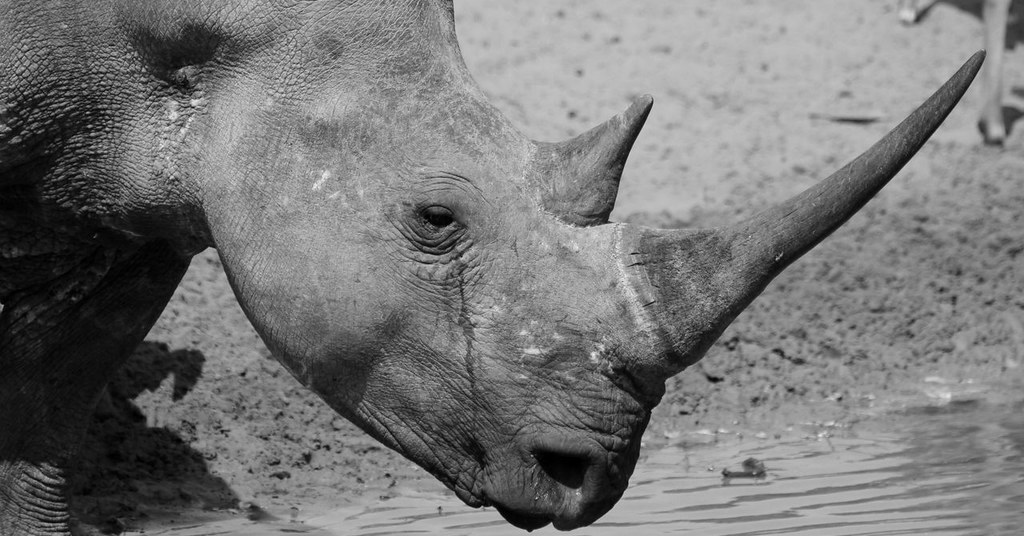
OPINION POST by Simon Espley – CEO Africa Geographic
OPEN LETTER TO MINISTER BARBARA CREECY, Department of the Environment, Forestry and Fisheries, South Africa
Madam Minister,
I read with interest your call for ‘scientific’ feedback on your recommendation that South Africa permit international trade in white rhino horn, and allow increased numbers of black rhino to be shot by trophy hunters. And, your recommendation goes even further – you suggest downlisting white rhinos from CITES Appendix I to Appendix II, because, “it is clear that C. simum simum does not meet the biological criteria for inclusion in Appendix I of CITES”. You have given us a mere 30 days to respond.
Surely, Minister, if those with the relevant resources and nous are to provide ‘scientific’ input, they should, at the very least, know how many rhinos we have left in our National Parks? I would imagine that you know how many wild rhinos remain and that you used this information when you came up with these recommendations. And yet your department has refused all approaches to reveal the numbers.
In the body of your recommendations, you make a few claims that took me by surprise. For example, you say that “legal and illegal harvests combined are currently still within sustainable levels”. Feedback from my networks is that white rhino populations in Kruger National Park have been particularly hammered by a horrible cocktail of drought and poaching and that the lower poaching statistics for 2019 to date that your department claim as a “success” (190 for the first six months of 2019, compared to 222 for the same period in 2018) is because there are fewer rhinos left to poach. Your claim that the situation is “sustainable” seems out of sync with what people on the ground are saying.
Feedback from several well-placed, respected individuals in my network is that the current population of white rhinos in the Kruger National Park is now significantly lower than the official 2017 estimate of 4,759 – 5,532 – this being the most recent official update. But, in the light of no official current numbers, everyone is speculating.
Subsequent editorial note: 17 months after we published this request the minister had still not revealed the rhino populations, but we did, from other official sources – the 2019 Kruger population was an estimated 3,549 white rhinos – a reduction of 67% in nine years.
I would imagine that a dramatic population reduction would be a bad foundation on which to be making applications to CITES to reduce rhino conservation protection, or to remove increased numbers via trophy hunting. Again, speculation.
The keyword here is ‘speculation’, and I have heard much of it lately. Without formal notification from you about how many rhinos are left in our National Parks, those of us who are concerned about rhinos, and particularly those that you now task to provide ‘scientific’ feedback, are left to speculate.
Speculation is what fills the void when facts are withheld, and becomes a powerful tool for those whose priorities are not aligned with yours. By not following the example of your predecessor, by not being transparent about how many wild rhinos we have left in our National Parks, you are feeding the very monster that is ripping the conservation world apart – those purveyors of emotive speculation, ideological rants and misinformation. These enemies of conservation are a fact of life these days, and they feast on this lack of transparency.
Please don’t tell us that releasing these figures is a security threat. As if poaching syndicates crunch their numbers and plan their attacks based on annual population updates. Or, is that your understanding of where poaching syndicates and ground crew get their intelligence?
Please Madam Minister, end the speculation, arm our scientists with the necessary facts, and disarm the enemies of conservation. Let’s focus on fact and the resultant considered strategies to keep our wildlife safe. Tell us how many wild rhinos remain in our national parks.
Sincerely,

Simon Espley – CEO, Africa Geographic
To comment on this story: Login (or sign up) to our app here - it's a troll-free safe place 🙂.![]()






